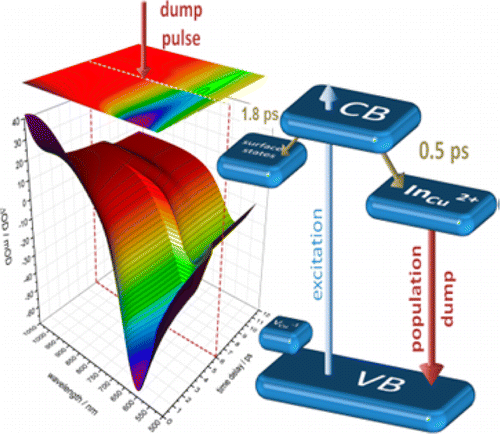New Paper by Dr Kevin Critchley
Quantum dots are fundamentally interesting due to their quantum confinement effects and they are also technologically important. Quantum dots are semiconductor nanocrystals typically <10 nm in diameter. Their small size has the effect of causing quantum confinement of the free 'holes’ and ‘electrons’ within the crystal -an ideal example of a ‘Particle in a box’. They have applications in lasers, solar cells, LEDs, bioimaging, sensing, and quantum computation. They will soon be used in the next generation of lighting and display devices replacing the current bulk semiconductor technology which we have all become dependant on. However, there is an issue with current quantum dots because they typically are cadmium-based. Cadmium is a toxic element and its use is being increasingly restricted. Therefore there is a drive to develop non-cadmium based quantum dots with similar optical and electronic properties to the best cadmium quantum dots. In a recent article published in J. Phys. Chem. C Dr Critchley and co-workers investigated a promising alternative, copper indium disulphide quantum dots. They used ultra fast laser experiments to determine the electronic structure of these nanocrysals for the first time. The results where surprising, the quantum dots actually efficiently emit light through defect states within the crystals rather than directly across the band-gap. Whilst this effect has been observed before the defect-type had remained unknown until now. We now know that the important defects are indium-copper anti-sites. An interesting aspect of this outcome means that we will be able to deliberately increase or control the defect densities to control the optoelectronic properties of these unique nanoparticles. The details of this work are published here: pubs.acs.org/doi/abs/10.1021/jp5065374

